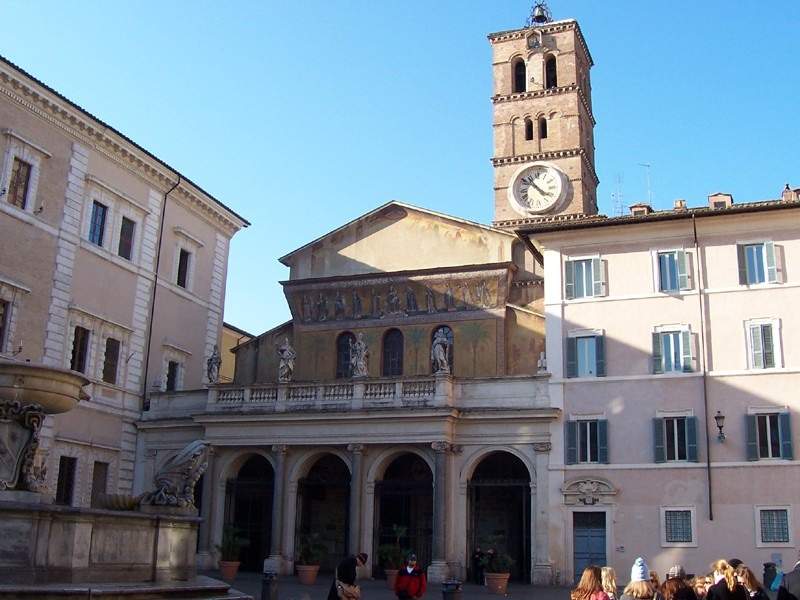The restoration of the facade of one of Rome’s most important churches, Santa Maria in Trastevere, has been completed. The year-and-a-half-long intervention by the Special Superintendence of Rome involved the medieval mosaic, the 18th-century travertine and granite statues and structures, and the 19th-century wall paintings. The restoration was directed by Elvira Cajano, cost 400,000 euros (entirely financed by public funds, from the ministry and the Soprintendenza: much of the income comes from the Colosseum Park, detached from the rest of the Soprintendenza) and was aimed at highlighting the mosaics as well as cleaning the granite columns and consolidating the conservation of the stone pieces (especially the travertine statues). Again, another purpose of the restoration was to ensure full legibility of the complex as Pope Pius IX had it modified with the interventions of Virginio Vespignani (who did the stylistic restoration) and Silverio Capparoni (who did the wall paintings instead).
“This is a symbolic place of medieval Rome,” superintendent Francesco Prosperetti explained to ADN Kronos, “and its restoration was very difficult. It was a matter of harmonizing the important 19th-century intervention, commissioned by Pius IX and carried out by Virginio Vespignani, which restored the facade to its supposed medieval appearance, with the true remains of that historical period represented by the mosaic. The medieval facade was profoundly revised first by Carlo Fontana in 1700 and then precisely by Vespignani. The need to make the medieval mosaic coexist with Silverio Capparoni’s nineteenth-century painting has been solved brilliantly.”
“Many generations of Trastevere residents,” stressed instead the parish priest of the Basilica of Santa Maria in Trastevere, Monsignor Marco Gnavi, “have not known the beauty of the facade, which is a gift offered to all of Rome and the world. This is not the end of the story because after the façade we should intervene in the interior of the Basilica. There is a karst river that follows the nave longitudinally. In those rooms, therefore, there is a lot of moisture coming from the bottom The walls of the side chapels have mold and ’eaten’ plaster and it would be necessary to intervene there.”
Image: Santa Maria in Trastevere. Ph. Credit
 |
| Santa Maria in Trastevere, restoration of the facade of one of Rome's most beautiful churches ends |
Warning: the translation into English of the original Italian article was created using automatic tools. We undertake to review all articles, but we do not guarantee the total absence of inaccuracies in the translation due to the program. You can find the original by clicking on the ITA button. If you find any mistake,please contact us.